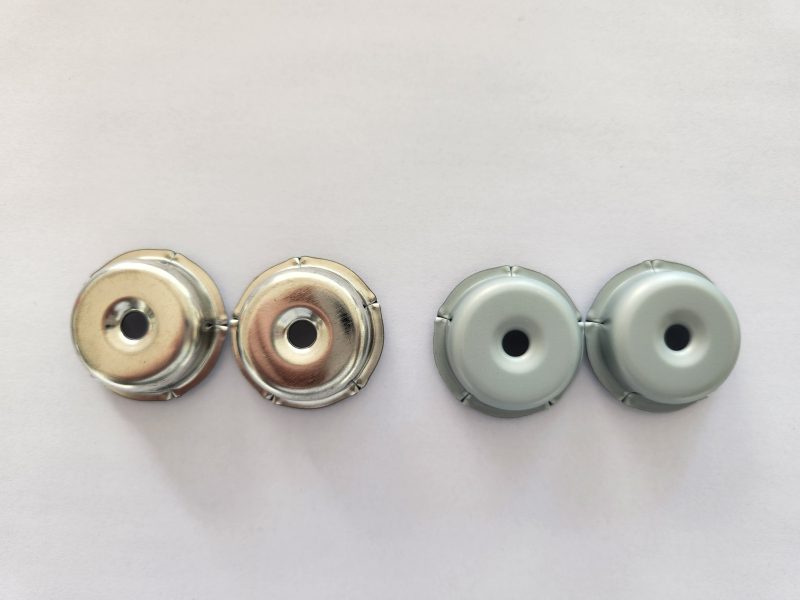
A Guide to Selecting Paint Bucket Gaskets Based on Pressure Ratings
Choosing the right pressure rating for a paint bucket gasket is crucial for preventing leaks, maintaining product integrity, and ensuring safety during storage or transportation. Pressure ratings indicate how much internal or external force a gasket can withstand without failing. This guide explains key factors to consider when evaluating pressure requirements for your specific application.
Understanding Pressure Ratings and Their Importance
Defining Pressure Ratings for Gaskets
Pressure ratings are typically measured in pounds per square inch (PSI) or bar and reflect a gasket’s ability to seal under varying conditions. A higher rating means the gasket can handle greater pressure differences between the inside and outside of the bucket, such as during temperature changes, vibration, or stacking. For paint buckets, common pressure scenarios include thermal expansion (from temperature fluctuations) and mechanical stress (from stacking or handling).
Why Pressure Ratings Matter
Using a gasket with an inadequate pressure rating can lead to leaks, spoilage of stored materials, or even safety hazards if chemicals escape. Conversely, over-specifying a gasket’s pressure rating may result in unnecessary costs or stiffness that makes installation difficult. Matching the gasket’s rating to your application’s demands ensures optimal performance and longevity.
Factors Influencing Pressure Rating Selection
Storage Conditions and Temperature Ranges
The environment where the paint bucket will be stored significantly impacts pressure requirements. Buckets stored outdoors or in uncontrolled climates experience wider temperature swings, causing materials inside to expand or contract. This creates internal pressure changes that a gasket must accommodate. For example, a bucket stored in a cold warehouse and moved to a warm room may develop condensation, increasing internal pressure. Choose a gasket rated for the highest expected temperature differential to avoid failure.
Handling and Transportation Methods
If buckets are stacked during storage or transported by truck or pallet, the weight of upper buckets exerts downward pressure on lower ones. This mechanical stress can deform gaskets over time, leading to leaks. Additionally, vibrations during transit can loosen gaskets or create micro-movements that wear down the seal. Select gaskets with higher pressure ratings if stacking or rough handling is common, and consider reinforced materials for added durability.
Chemical Compatibility and Material Properties
The type of paint or chemical stored in the bucket affects the gasket’s material choice, which in turn influences its pressure rating. Some chemicals can degrade certain gasket materials, reducing their ability to withstand pressure. For instance, solvents or acids may soften rubber gaskets, making them more prone to failure under stress. Ensure the gasket material is chemically resistant to the stored substance and rated for the expected pressure conditions.
Matching Pressure Ratings to Application Needs
Low-Pressure Applications: Short-Term or Indoor Use
For buckets storing paint in stable indoor environments with minimal temperature changes and no stacking, a gasket with a lower pressure rating (e.g., 5–15 PSI) may suffice. These gaskets are often more flexible and easier to install, making them ideal for temporary storage or low-risk scenarios. However, verify that even low-pressure gaskets are compatible with the stored material to avoid chemical degradation.
Medium-Pressure Applications: Moderate Handling and Temperature Variations
Buckets used in workshops or warehouses with moderate temperature fluctuations and occasional stacking require gaskets rated for 15–30 PSI. These gaskets balance flexibility and strength, providing reliable seals under typical handling conditions. They’re also suitable for paints that may emit gases during curing, creating slight internal pressure. Regularly inspect gaskets in these applications for signs of wear or compression set.
High-Pressure Applications: Industrial or Outdoor Storage
For industrial settings, outdoor storage, or transportation over long distances, gaskets rated above 30 PSI are advisable. These gaskets withstand extreme temperature changes, heavy stacking, and prolonged vibration without leaking. They’re often made from reinforced materials like silicone or fluorocarbon rubber, which offer superior chemical resistance and durability. High-pressure gaskets may require precise installation to ensure even compression, so follow manufacturer guidelines closely.
Common Mistakes to Avoid When Selecting Pressure Ratings
Underestimating Environmental Factors
One common error is choosing a gasket based solely on the bucket’s intended use without considering storage conditions. For example, a bucket used indoors might be stored outdoors temporarily, exposing it to higher pressures than anticipated. Always account for worst-case scenarios, such as temperature extremes or accidental stacking, to prevent leaks.
Ignoring Material Compatibility
Selecting a gasket based on pressure rating alone without verifying chemical compatibility can lead to premature failure. Some materials lose elasticity or become brittle when exposed to certain chemicals, even at low pressures. Always cross-reference the gasket material with the stored substance’s properties to ensure long-term reliability.
Overlooking Installation Requirements
High-pressure gaskets often require specific installation methods, such as uniform compression or the use of sealants, to function correctly. Failing to follow these guidelines can reduce the gasket’s effective pressure rating. For example, uneven torque on a lid can create pressure points that cause leaks, even if the gasket itself is rated appropriately. Train staff on proper installation techniques for high-pressure applications.
By carefully evaluating storage conditions, handling methods, and chemical compatibility, you can select a paint bucket gasket with the right pressure rating for your needs. This proactive approach minimizes leaks, extends gasket life, and ensures the safe storage of paints and chemicals.
